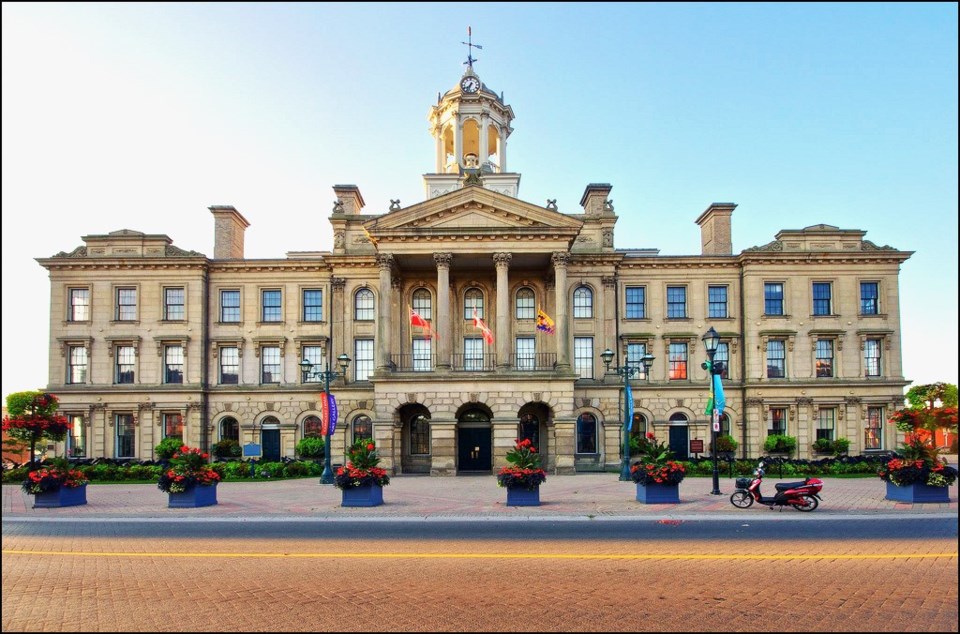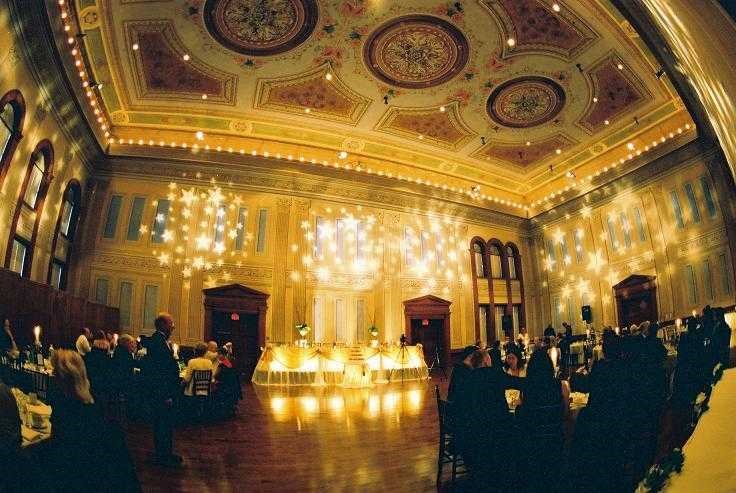As winter arrives, there is a palpable excitement in Cobourg, as residents and visitors alike look forward to the celebrations for the Christmas season in town.
As every beach town resident in Ontario knows, the summer season is hectic and sometimes chaotic. But with the changing seasons, a new type of visitor comes to town along with the migrating birds. Laden instead with tour guides and occasionally binoculars, they wander the four heritage districts, and yes, still the board walk and beach, only a few blocks away from the downtown main street known as King Street. Therein lies the crowning jewel of Cobourg, Victoria Hall.

This extravagant public edifice has been the centre politically, legally, and culturally of civic life since its opening in 1860. Its size and opulence reflect the ambitions of mid-19th century Cobourg, when it aspired to surpass the larger centres of Kingston and Toronto both in prosperity and influence. There was eventually a hope that Cobourg could become the capital of Upper Canada, eventually to become Ontario. The cornerstone was laid in 1856 by Sir Allan McNab, Prime Minister of the province of Upper Canada, and officially opened in 1860 by the Prince of Wales, later King Edward VII, son of Queen Victoria.
The architectural style is a Palladian neo-classicism, designed by Kivas Tully. Of particular interest are the superb Corinthian capitals on the fluted columns and pilasters decorating the façade, and the massive Corinthian columned clock tower, visible throughout town.

The interior is of equal grandeur to the exterior, particularly the first floor courtroom, a replica of London’s famous “Old Bailey.” Also on the first floor you will find the office of James Cockburn, Cobourg lawyer and the first Speaker of the newly formed Canadian Parliament, fitted out as his office in the mid 1860’s. On the second floor is the grand ballroom and currently concert hall with its elaborate “Trompe l’oeil” ceiling and wall frescoes. This is the very spot where a young Prince of Wales in 1860 danced the night away. Currently the ballroom and concert hall is home to plays, classical and jazz performances as well as weddings. Click here to find out when performances are occurring.
At Christmas time, the hall is decked out in splendour along with the surrounding areas. Millions of lights celebrate this glorious two to three block area highlighted by a street market and official lighting ceremony to kick off the season.
The Hall is open on weekdays as the municipal offices are located here and on weekends when there are events in the Concert Hall. Tours are available upon requests and can be arranged by calling the Hall at 905-372-4301.

Adjacent to Victoria Hall is the Fire Hall Theatre. Constructed in the second Empire style, it once housed the firetrucks of Cobourg. The Northumberland Players stage many events there and this year will host Christmas productions in early December. Visit here to find out times and performances.
Cobourg is a hub of culture, arts and history. In Victoria Hall, you will also find the Northumberland Art Gallery, with both a permanent collection and well curated exhibitions.
Surrounding the Hall as it is known in Cobourg is a downtown heritage district with cafes, restaurant, and shops. There are also many heritage bed and breakfasts, one of the finest being Lakehurst Estates.
Built in 1832 for James Calcutt, a local brewery owner, this fine mansion is a lovely example of the Georgian style located in the downtown heritage district. Owned also by a Chief Justice of Ontario, the property has changed hands many times and has housed other historic figures.

Strolling throughout Cobourg is a visual treat. The waterfront is home to many species of birds all year long. The Boardwalk and walking trails traverse the downtown areas. King Street, where you will find Victoria Hall and the shops, cafes and restaurants is just an easy two blocks from the Boardwalk. Surrounding this walk are the four heritage districts. You can download one of the walking tour guides from Experience Cobourg here.
In 2017, the Architectural Conservancy of Cobourg and east Northumberland undertook to ascertain how many current properties in the downtown were standing in 1867. Amazingly they found 280 and marked them with a sign to celebrate Canada’s sesquicentennial. As you follow the walking tours, you will pass by many of these properties.
There have been many famous summer residents to visit Cobourg between 1874 and 1950 including General and President Ulysses Grant who owned one of the fine mansions that used to line Lake Ontario. That one still stands and is known as Claremont. Therein lies a mirror that once sat in the Whitehouse in Washington. It is currently owned by the Sisters of St. Joseph and is a retreat centre situated on the scenic Monk’s Cove.
Many of you will be excited to know that much filming is done in Cobourg including Murdoch Mysteries. For Netflix fans there is even a Ginny and Georgia walking tour as this show was also shot here. The Marie Dressler Museum highlights films of another era and specifically women of the silent screen. And yes there is a Cobourg connection to these famous actors. You can book your visit here.
There is much to see and do in Cobourg but certainly a visit at any time of the year is a delight. Fall and winter for those who want a quieter time or who want to enjoy Christmas decorations can be a delight as there are less crowds. In all seasons Cobourg is a treat and hence its motto as “the Feel Good Town.”
This article was written by the Architectural Conservancy Ontario (ACO), which is the largest heritage advocacy organization in Ontario with 16 branches across the province. Our objective is to promote the identification, conservation and reuse of buildings, structures, districts and landscapes of cultural heritage significance. Under our Keep, Fix and Reuse slogan, we advocate for socially and environmentally sustainable solutions for Ontario's older building stock. For more information about ACO or to become a member visit www.acontario.ca.




